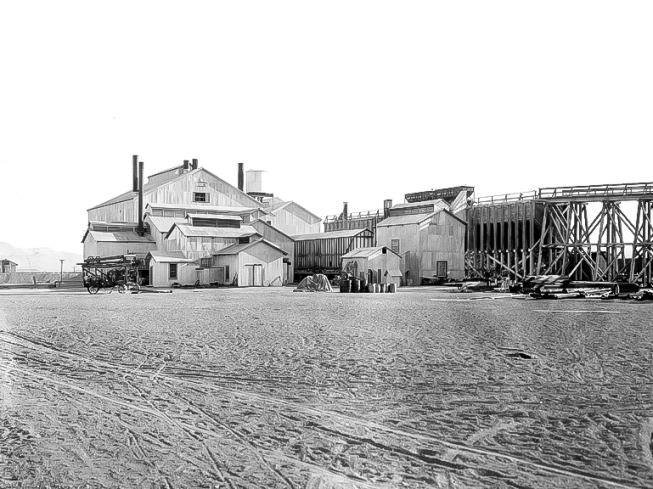Featured image credit: Carol M. Highsmith
Anyone from Las Vegas can agree that sometimes you need to make your own luck. That’s what the city accomplishes as a spectacularly flashing beacon attracting people from around the world despite its remote desert locale. It recounts a tale from Paul Bowles’ classic novel The Sheltering Sky in which three dancers tragically attempt to enjoy afternoon tea in the Sahara desert. More relevantly, it echoes Werner Herzog’s celebrated 1982 film Fitzcarraldo about an opera-obsessed rubber baron who, enthralled by his desire to build an opera house in the Amazonian jungle, refuses to accept defeat, even moving a steamship over an arduous hill teeming with thick flora. Its story mirrors the Amargosa Opera House, a place that, by all logic, shouldn’t exist. Yet, thanks to one intrepid woman, it remains today at the edge of the hostile environs aptly dubbed Death Valley, not 100 miles away from Vegas’ lights.
The Town Built on Borax
The story of the Amargosa Opera House begins with a naturally occurring chemical compound called borax. Over the decades, companies have used borax in a variety of household goods from toothpaste to home cleaning products. Needless to say, borax mining meant big money. So, when significant deposits were found near what would today be considered the eastern outskirts of California’s Death Valley National Park, the Pacific Coast Borax Company decided to set up shop.
Designer Alexander Hamilton McCulloch was commissioned to mold the town of Amargosa; an oasis to host a group of borax miners and their families. Opting for a Spanish Colonial Revival style which was all the rage in California at the time, McCulloch drafted plans for a full-service mining town in the shape of a lucky horseshoe. In addition to the miners’ dormitory, McCulloch included company offices and headquarters, a hotel with accompanying dining area (keeping traveling investors in mind), and a town store for supplies. But the miners would need entertainment too. Thus, the plans also included the Amargosa Opera House; a small theater that would mostly be used to show movies.
The Finite Life of a Mining Town
Ground broke on Amargosa in 1923 and, since the Pacific Coast Borax Company was on an ambitious schedule, was completed by 1925. Amargosa benefitted from standing at the final stop of the Tonopah and Tidewater Railroad; a class II system designed with borax hauling in mind. Amargosa wasn’t what you might think of today when imagining a 1920s mining town at the edge of Death Valley. When traveling executives arrived on the train, they were typically met by valets who attempted to create a degree of comfort for the guests. At its peak, the mining town’s population exceeded 350 people.
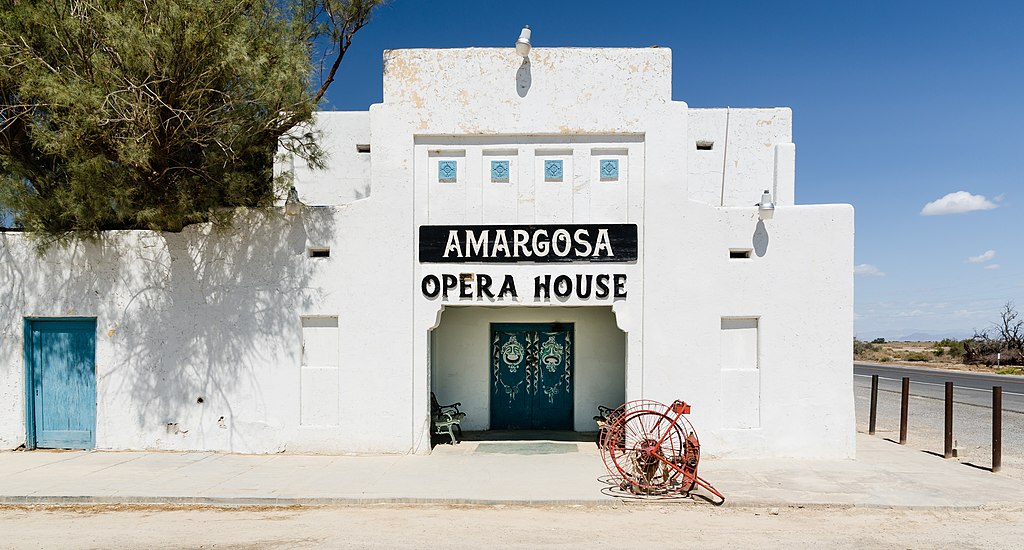
But borax mines don’t replenish. Therefore, Amargosa’s life as a mining town was always limited. Eventually, the Pacific Coast Borax Company pulled up their stakes, but Amargosa remained, standing in arid oblivion. Eventually, the Tonopah and Tidewater Railroad stopped turning a profit. In 1942, the tracks were torn from the scorched earth and shipped to Egypt. There, they were laid again, this time to serve Allied forces in North Africa.
Amargosa never quite became a ghost town. But it also never hit the heights of its days during the borax boom. At times, private ownership of the town would change, but almost everything else remained the same. At least until the 1960s when a shooting star of sorts landed in Amargosa, kicking up its dust.
Marta Becket Lands in Death City Junction
Broadway dancer Marta Becket’s car waddled to a stop at the periphery of Death Valley Junction, an outpost formerly known as Amargosa. The flat tire was a simple enough fix, but Becket and her husband decided to explore the nearly forgotten town that, despite its new name, was still often referred to by the old one. For many people, the unexpected flat would be an inconvenience at best. But as Becket entered the town’s former opera house, now a recreation hall called Corkhill Hall, she saw nothing but potential.
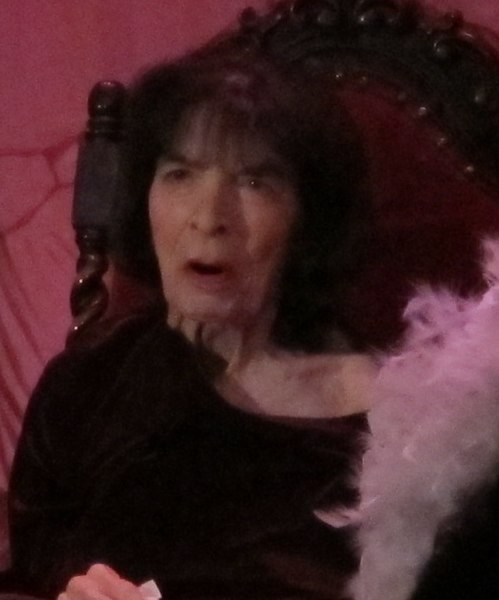
Traveling performers were a rarity in Amargosa, to say the least. Therefore, Corkhill Hall had found more frequent use as a social hub for the town’s scant population. It’s where Death Valley Junction’s preacher gave his sermons and where the local school held its socials. The town convened there to make important decisions about its future and to say goodbye to its past with funerals. Perhaps Becket saw all of this when she glanced in at the simple room. But all we can say for certain is that she saw the stage.
Broadway via Death Valley at the Amargosa Opera House
By 1967, Becket had decided to leave the spotlight of Broadway for the starlight of Amargosa. She reached an agreement to rent Corkhill Hall, renaming it the Amargosa Opera House in honor of the town’s history. The space was in desperate need of TLC. And Becket had the resources to give it in spades. She set to work renovating the opera house, building sets, and creating programming, thrilled by the prospect of bringing art to the parched populace of the former mining town. But come showtime, one thing was glaringly missing: an audience.
Some performers are so passionate about their craft that they don’t care who, if anyone, is watching. It should come as no surprise that Becket was one of those performers. After all, she’d graced the stages of Broadway, but still opted for a dusty platform at the edge of one of the most inhospitable environments in the world. Occasionally, the townsfolk would look in on her efforts. But often, Becket would find herself kicking her heels to a completely empty auditorium. Yet, the show always went on.
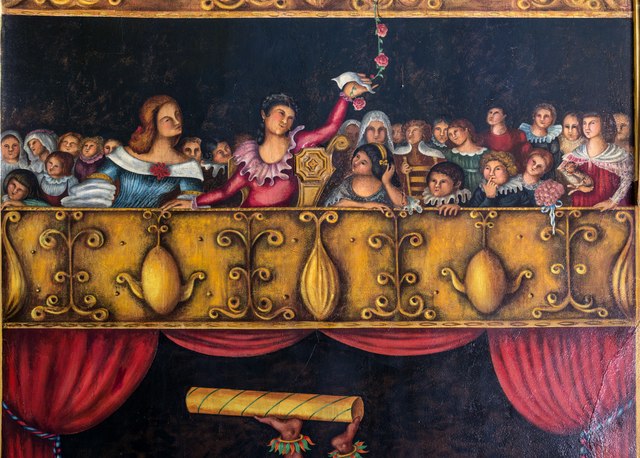
Eventually, the lack of a consistent audience pushed Becket to create one herself. She began the meticulous process of painting an all-encompassing mural on the adobe walls of the Amargosa Opera House. Soon, she was performing for a two-dimensional cast of elite royals from around the globe; a captive and captivated audience silently soaking in her every move.
The Amargosa Opera House Finds Its (Second) Audience
We’ll never know how long Becket would have been content to perform for her adobe audience. Because in 1970, a team of journalists from National Geographic stumbled upon one of the dancer’s performances for her phantom spectators. They immediately decided to do a profile on the desert’s personal dancer. Another piece followed in Life magazine. And suddenly, people were making pilgrimages to Amargosa to see Becket in her natural environment.
Travelers from around the world braved remote stretches of nothingness and record-breaking heat to buy tickets for the Amargosa Opera House. For the second time in her life, Becket had painted her own audience in the most unlikely of places. Yet, she continued toiling away at her mural of spectators, completing the finishing touches in 1974.
Ensuring the Legacy of the Amargosa Opera House
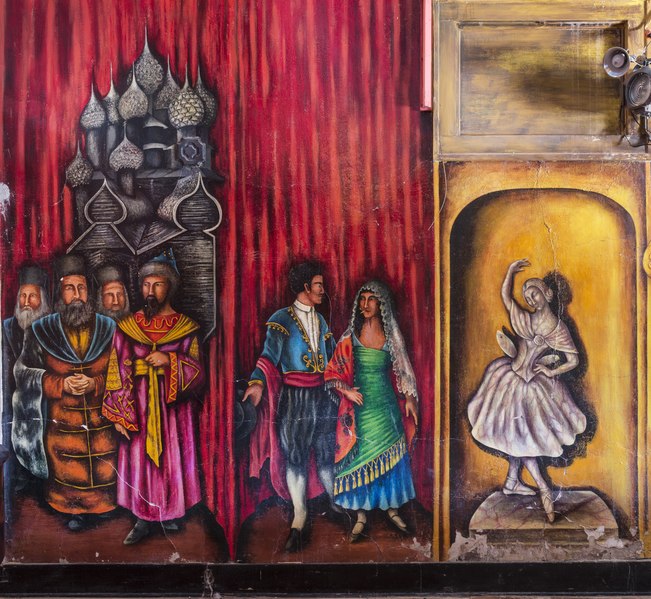
By this point, the world had come around to see Amargosa for the gem that Becket had noticed a decade earlier. So the dancer decided to use that to the town’s advantage. The same year that she completed her painted patrons, Becket established the Amargosa Opera House, Inc. nonprofit organization. Its goal? To secure the preservation of the Amargosa Opera House and its surroundings.
By 1981, the Amargosa Opera House, Inc. had amassed enough funding to purchase Death Valley Junction, still colloquially referred to as Amargosa by many to this very day. By December 10, the town was added to the National Register of Historic Places, securing its legacy. Becket continued to oversee renovations to the timeworn theater. In 1983, she facilitated the purchase of 120 seats from the Boulder City Theater to ensure the comfort of her patrons. That same year, the official marker from the National Register of Historic Places was installed.
The Show Must Go On
Marta Becket passed away in 2017 at the age of 92, having retired from the stage just a mere five years earlier. But her efforts continue to resonate, evident in the wonderstruck eyes of all who continue to visit Death Valley Junction and the Amargosa Opera House. She also continues to hold a place in the theater… quite literally. One of the house seats is permanently set aside so she can continue to enjoy the fruits of her labors. Her beloved cats Rhubarb and Tuxedo are immortalized too, painted into the expansive mural that continues to grace the walls of the Amargosa Opera House.
And while the attached hotel is said to be haunted, the Amargosa Opera House itself is by contrast saturated with a vivacious liveliness. It’s become an eccentric venue for live music, theater, and other performances, attracting performers from all over, if not quite with the same finality that it lured Becket away from Broadway so many decades ago.
It just goes to show you that where some people see dust, a rare few see stardust. And an even rarer few can convince everyone else to look again and see it too. Perhaps that’s why people are often interested in exploring the impractical. Sure, there’s a chance you’ll end up sand-sipping skeletons like The Sheltering Sky’s ill-fated dancers. Or, just maybe, you could become the lone star in a desert sky, stealing the breath of the audience you created from thin air.
With a brand that says as much as JohnHart’s, Senior Copywriter Seth Styles never finds himself at a loss for words. Responsible for maintaining the voice of the company, he spends each day drafting marketing materials, blogs, bios, and agent resources that speak from the company’s collective mind and Hart… errr, heart.
Having spent over a decade in creative roles across a variety of industries, Seth brings with him vast experience in SEO practices, digital marketing, and all manner of professional writing with particular strength in blogging, content creation, and brand building. Gratitude, passion, and sincerity remain core tenets of his unwavering work ethic. The landscape of the industry changes daily, paralleling JohnHart’s efforts to {re}define real estate, but Seth works to maintain the company’s consistent message while offering both agents and clients a new echelon of service.
When not preserving the JohnHart essence in stirring copy, Seth puts his efforts into writing and illustrating an ongoing series entitled The Death of Romance. In addition, he adores spending quality time with his girlfriend and Romeo (his long-haired chihuahua mix), watching ‘70s and ‘80s horror movies, and reading (with a particular penchant for Victorian horror novels and authors Yukio Mishima and Bret Easton Ellis). He also occasionally records music as the vocalist and songwriter for his glam rock band, Peppermint Pumpkin.


